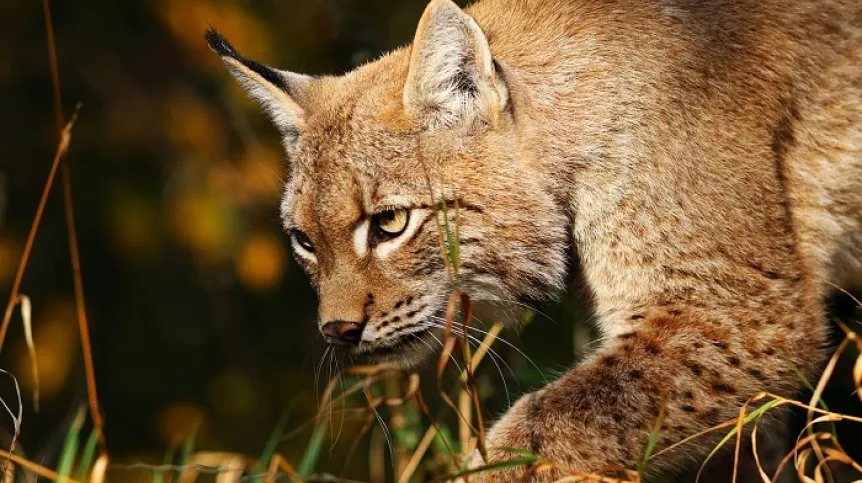
Scientists have checked how lynx fare in the landscape of Europe, which is, among other things, heavily transformed by humans and fragmented. It turns out that a combination of the habitat availability and human impact may determine the survival of the species. This is of great importance for their protection, emphasise the study authors including researchers from Poland.
The lynx range of occurrence in Europe is highly fragmented, which is mainly due to the accessibility of key environments for these large predators. Dominated by humans, the European continent offers environments with varying levels of anthropogenic transformations.
The strategy of land use and available habitats by lynx may be an important factor for their survival in a human-transformed environment.
Environments that provide cover for lynxes, but also the possibility of obtaining food, such as forests and areas with varied terrain, may be of particular importance, say scientists who assessed the situation of the European lynx.
An international team of researchers, which include scientists from the Mammal Research Institute of the Polish Academy of Sciences in Białowieża and the Institute of Nature Conservation in Kraków, decided to study the strategy of using the environment by lynx within their individual areas, also in terms of their location in the landscape, in areas with varying degrees of human transformation.
Telemetry data of 434 lynx individuals from 7 European populations, from the Swiss Jura and the Balkans to Scandinavia and the Baltic States, living in 13 countries, were used for the analysis. The results have just been published in the scientific journal Landscape Ecology.
Professor Rafał Kowalczyk from the Mammal Research Institute in Białowieża and co-author of the paper said: “We found that with the increase in the degree of landscape transformation, the intensity increases of lynx use of environments that provide cover and shelter, such as forests and areas with varied terrain. This occurs both within their individual territories and in the scale of territorial location in the landscape. Forests are most strongly preferred in areas with the lowest degree of tree cover. This strategy allows these large predators to avoid contact with humans.”
Moreover, the availability of forests allows lynx to inhabit a landscape more transformed by man. Human pressure and the availability of sheltering environments also affect the temporary use of habitats by lynx. These big cats increase the use of sheltered environments and decrease the use of human-transformed areas during periods of high risk of human contact (daytime) and of increased risk to kittens (first three months of life).
Professor Krzysztof Schmidt from the Mammal Research Institute of the Polish Academy of Sciences, and co-author of the paper who has been studying lynx for over 30 years, said: “Our research shows the extraordinary adaptability of the lynx to human pressure and emphasises the importance of sheltering habitats at various spatial scales for the coexistence of large carnivores and humans in the modified landscape of Europe.
“We emphasise that the landscape structure largely determines how large carnivores can adapt to human pressure, and thus plays an important role in shaping the distribution and use of habitats by these large predators.”
Importantly, it is not human pressure alone, but a combination of habitat availability and human impact that determines whether large carnivores can return to and survive in human-dominated areas of Europe. This is of great importance for their protection.
The paper is yet another scientific work on lynx based on data from a large number of individuals from many areas of Europe. Such analyses allow scientists to understand universal patterns and factors affecting the ecology of lynx, which is not always possible to study at the level of individual populations living in specific local conditions.
Professor Kowalczyk said: “We plan to publish further scientific papers as part of the scientific network Eurolynx that brings together lynx researchers from all over Europe, who collect data on these large predators.”
PAP - Science in Poland
zan/ kap/
tr. RL













